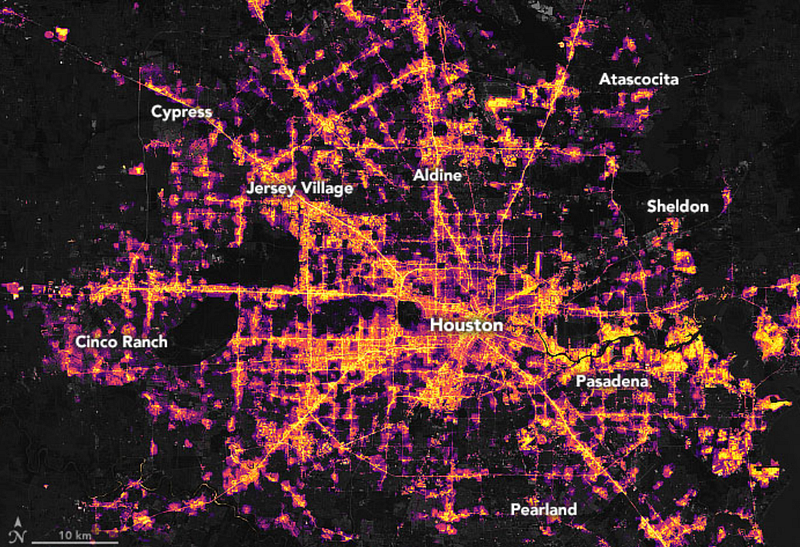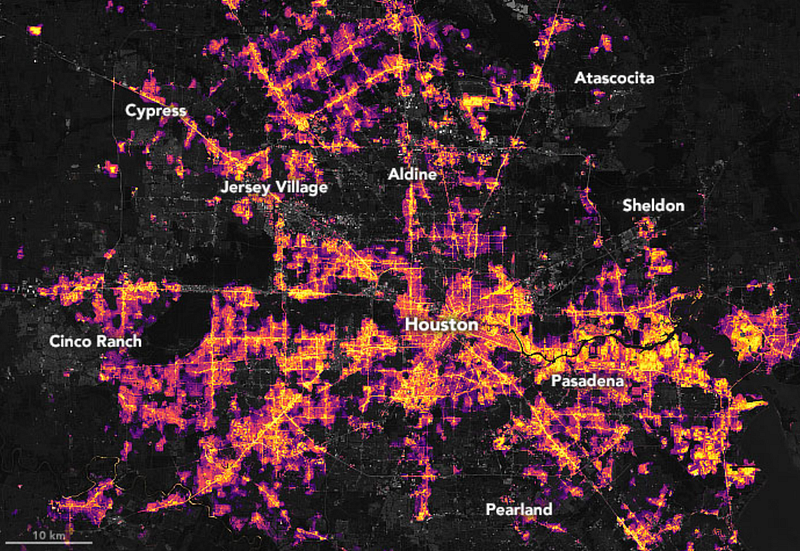Texas Blackout: What Caused the Disaster and Where Do We Go From Here?
Ignore the images above for a second. Just imagine having to fend off the wintry weather outside your residence with neither power for…
Ignore the images above for a second. Just imagine having to fend off the wintry weather outside your residence with neither power for heating nor water, and thus left with no choice but to scoop up the ice outside your door with which to boil for water, and blankets held up with duct tape on your front door just to maintain the insulation of your household. This sort of desperation and helplessness was felt by millions of Texans (ie. residents of the U.S. state of Texas) between February 15 and 20, the duration of which was insufferable for all those affected.
Now that the worst has passed, what comes next was a slew of backlash and criticism against ERCOT ( Electric Reliability Council of Texas), a non-profit corporation regulated by PUC (Public Utility Commission) which is in charge of all Texan utilities including water, sewage and telecommunications. The parties responsible for ensuring a stable supply of power to all residents are followed by the resignations of ERCOT CEO Bill Magness, PUC Chair DeAnn Walker, as well as members of both ERCOT board of directors and PUC Commissioners. State legislators immediately launched the investigation into the disaster by commencing hearings involving both ERCOT and PUC, power generators, the utility companies, as well as other related parties. The causes and the aftermath of this historic energy crisis shall be delved into below.
What exactly led to the huge blackouts?
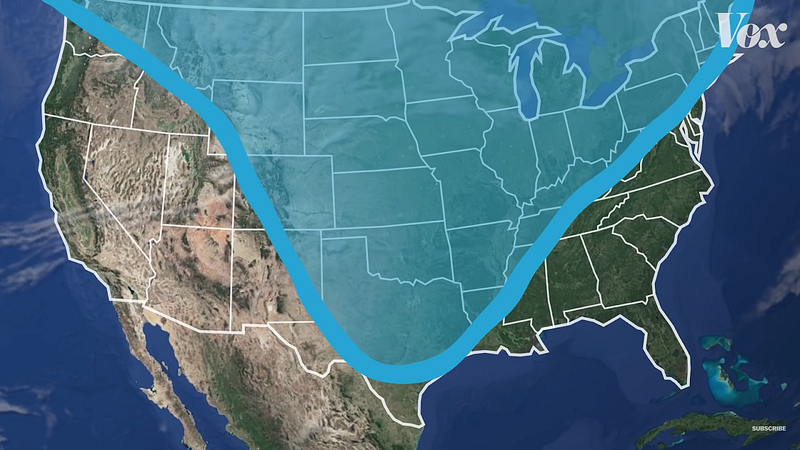
In mid-February, cold arctic air usually held up in Earth’s jet stream dipped down into the U.S. during a meteorological phenomenon which is known as the ‘polar vortex’, which often brings the coldest air into the U.S. during the winter experience. The strange anomaly this year is how far south it has reached as compared to previous winters. This had consequently led to a winter storm that brought the temperature down to dangerous levels (-16 ℃). Together with the untimely blackouts, this phenomenon became deadly for more than 100 Texas residents, according to an NBC report almost one month after the energy crisis had ended. As news organisations and government agencies started to grasp the magnitude of the crisis, they began to look at the matter in which the Texas power grid crumbled in face of the extremely cold weather.
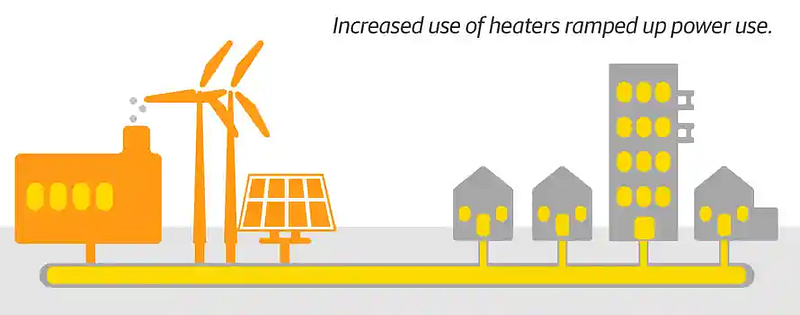
It is common knowledge that countries situated in the higher north of Earth’s hemisphere are located in temperate climate zones and they tend to have different seasons throughout the year. Unlike Malaysia, which is located in the tropical zone near the equator, experiences comparatively hot temperatures or humid rainy weather all year long. Thus, when winter comes around, it is common practice for residents to switch on their radiators or heaters to provide much-needed heat to fend off the cold. When this happens, power use will significantly increase as heating is essential for every household and public space to provide shelter against the cold weather.
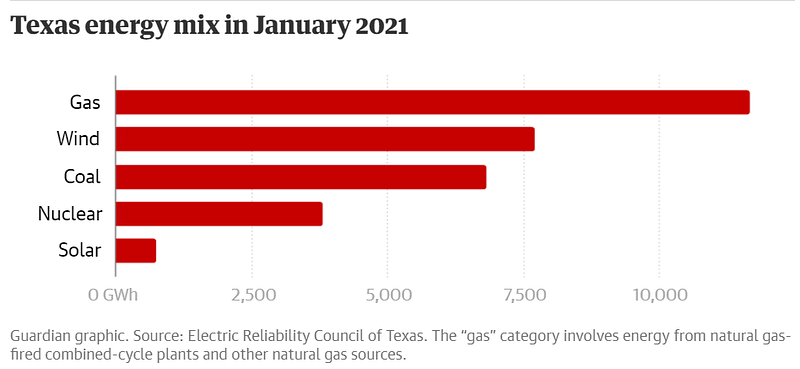
Unfortunately, as most of Texas’s energy generation came from gas, wind or coal, the abnormally cold weather severely affected many of such utility facilities since the majority of these infrastructures were not prepared for the cold due to lack of funding for winterisation (the process of preparing certain equipment to increase resistance against winter conditions) efforts. The reason for such a lack of funding will be discussed below.

Despite ERCOT’s best efforts on February 15, the day that the disastrous blackouts began, they had no choice but to leave millions of residents without power as frozen gas pipes, wind turbines, coal piles across the state eventually led to generation failures. However, officials claim that the alternative to millions losing power was a catastrophic months-long blackout, according to the Texas Tribune.
Why were the Texan utility providers so unprepared for the winter storm?
Simple answer: they are not compelled to. Of course, like many other contentious issues, the reality is more nuanced than it seems on the surface. To understand this issue in greater detail, you would first have to understand how electrical grids are distributed between most of North America. As shown in the image above, with the exception of Texas (and Quebec which is not shown) that opted out of the major grids when they were built, namely the Western or Eastern Interconnection, that allowed electricity to flow across great expanses of lands since it covers many states of the U.S and even Canada. One of the benefits of having such a massive web of local grids linked together into Interconnections is shown in Oklahoma (which was also hit badly by the same winter storm) as they managed to keep the lights on by receiving electricity from the grids of neighbouring states instead. What this means, however, is that Texas is free from regulations set by the Federal Government on the two Interconnections since they involve multiple states each.

While deregulation was one of the few reasons that left Texas’ grids poorly protected against the extreme cold, historical storms had in fact already caused rolling blackouts in the past, once in 1989 and the other in 2011. After said blackouts, federal commissions recommended utilities to “ensure reliability in extreme weather conditions” as well as the state government to implement winterisation measures. While the PUC did introduce these measures, they were ‘voluntary’ and as a result, most privately owned utility companies ignored these recommendations. Unknowingly, by ignoring these recommendations, they had inadvertently doomed Texas’ chances of withstanding a future winter storm and the rest is history.
Sidenote: The trip to Cancún and the blaming game

While the worst of the power outages continued in Texas, famed Texas senator Ted Cruz was seen queueing at the Houston airport with his family waiting to board their flight to Cancún, Mexico. His irresponsible actions left many residents of his home state outraged and disappointed that their elected leader had chosen to leave the crisis unattended and go on a vacation with his family instead. Despite his return later that day, the damage was done as most of the residents he visited later that week refused to even shake his hands.
Meanwhile, state officials alongside conservative-aligned cable news channel FOX News, capitalizing on the wind turbine failure during the storm, lambasted The Green New Deal, which is a resolution that outlines the framework for a comprehensive and ambitious plan to combat climate change authored by New York Democratic Representative Alexandria Ocasio-Cortez. By pushing all the blame onto conservative media’s favourite target, they attempted to shield Texan fossil fuel industries from ridicule and criticism despite the fact that gas and coal were the main contributors to the Texan power grid. These selfish acts of protectionism will only further damage Texas’ chances of getting through the next extreme weather event unscathed.
The effects of climate change on the ageing American infrastructure and where do we go from here?

With most of the U.S. power infrastructure built in the past 30–50 years and few, if any investment went into upgrading works, the Texas blackout in fact signals a crucial turning point for those hoping to build a resilient grid to cushion the effects that climate change would bring in the latter half of this century.
According to the National Oceanic and Atmospheric Administration (NOAA) statistics, extreme weather events such as winter storms and cyclones would only increase as we go further into the 21st century as climate change worsens, thus it is imperative for not just the U.S. government but governments worldwide to address the issue of harsh weather conditions impacting crucial infrastructure, and how we can effectively address it by pooling resources and coordinating with the international community. The 2021 United Nations Climate Change Conference which will be held from Nov 1 to Nov 12 this year would be the best place to start requesting major economies to commit their industries to more ambitious goals for the ultimate objective of combating climate change together, as well as sending a message of hope to those who suffered from these events and the subsequent aftermath that their descendants might not suffer from the same disasters that our generation endured.
[Written by: Christopher Lim]
References
Timeline of the Texas Blackouts and Subsequent Fallout
Why the cold weather caused huge Texas blackouts — a visual explainer
Death toll from Texas winter storm grows to more than 100
Texas was “seconds and minutes” away from catastrophic monthslong blackouts, officials say


